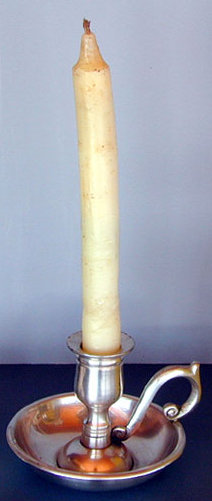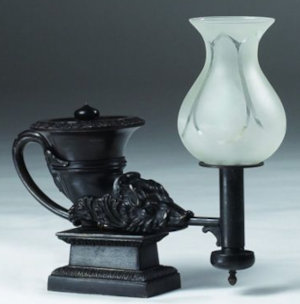William Collett from Worcester opened a grocer’s shop on the main street in Bosbury in between 1861 and 1871. After he married, he and his wife Jane ran the shop. Mr. Collett died in October 1882 and his wife took over the business with a manager, Mr.William Hill and three sons working as grocery assistants. On her death in 1902 their sons William and George kept the shop on.
The goods sold was mainly of course groceries. The big sellers appear to be Cheese, Potatoes and Tobacco. Staple goods purchased included sugar, salt, butter, bacon, lard, rice, tapioca, groats (1/350), (1/178), corn, currants, raisins, tea, coffee and cocoa, vinegar, treacle, matches, candles, soap, washing powder, blacking, sweet (olive) oil for cooking, maccaroni (2/1-l). A pigs’s jowl was 1/8 (1/26). A new product was Hudson’s Extract of Soap (1/370) – in 1850, the world’s first dry soap powder. Vegetables were sold by the bushel or peck including potatoes, peas and onions.
Occasionally people would buy oranges, lemons, plums, Indian Corn (maize/sweetcorn) (1/124), box of figs (1/152&483), a pineapple for 1/6 (1/569) as well as eggs, Oxford Blue cheese (1/354), Lime Juice Cordial (1/377) Lea & Perrins [Worcester] Sauce (2/109-r).
The girls schoolmistress, Miss Mary Arrowsmith, had a particular liking for marmalade (1/234 1/235) and also bought a box of slate pencils (1/568) for the school; Mr. Morgan, the boys schoolmaster, bought cigars (1/184).
The other most purchased items were the various forms of candle which included ‘Dips’ and ‘Composites’. The latter were origially made from tallow (animal fat) and coconut fat by the firm of Price’s Candles — their trade name was Belmont Composites from the name of the London factory.
Note: In case anyone looks at the ledgers in the future, I have labelled some key items with the book number, page number and date e.g. (1/240/18Jul.1877) or with more easily found items just the book and page number.
SPICES sold included black pepper, nutmeg (1/37), mace (2/4-l), anniseed (1/60), liquorice (1/34), carraway + ground ginger (1/380), pickling spice(1/434).
 TINNED GOODS
were a recent breakthrough, the tin opener first being patented in 1855 in UK. Here we have tin cans of
salmon (1/144,1/187), mustard (1/145) beef (1/227),
sardines (1/179), syrup (1/269); also oysters (1/176),
lobster (1/516, 2/1), and bloater paste (2/288-l) mentioned.
TINNED GOODS
were a recent breakthrough, the tin opener first being patented in 1855 in UK. Here we have tin cans of
salmon (1/144,1/187), mustard (1/145) beef (1/227),
sardines (1/179), syrup (1/269); also oysters (1/176),
lobster (1/516, 2/1), and bloater paste (2/288-l) mentioned.
BAKERY ITEMS Made[i]ra Cake (1/381), Fairy Cakes 8d each (2/378).
Biscuits were previously bought for medicinal use to aid digestion. Now the choice was increasing with new names appearing on the shelves.
Queen Biscuits (1/414), Osborne Biscuits (from 1860) (1/417),
Chester Biscuits (1/276), Garibaldi Biscuits (from 1861) (1/481),
Marie Biscuits (from 1873) (2/1-r).
HOUSEHOLD ITEMS such as hair oil (1/120), a bucket for 9d.
(1/391), parafine [paraffin] oil for lamps, a beesom 2d. ((1/185),
firewood, night lights (1/102), tin tacks (1/164), needles (1/186),
reels of cotton, a thimble ½d. (1/561), boot laces, shoe brush (1/185),
E[mery] cloth (2/288-l), bottle of ink (1/258), writing paper
(1/361) and, very occasionally, snuff (1/392). A Knife Brick (1/188)
was presumably a flat piece of brick for sharpening knives. But a Hearth Stone for only 2d. (1/510) and a
Bath Brick for 1½d. (1/515) are both a bit of a mystery.
Mr Collett also extended his range of wares. MEDICINES This was the heyday of patent medicines. The Collett’s sold many including
Beecham’s Pills
(1/26), Eno’s Fruit Salts (1/89), Glauber’s Salt (osmotic laxative)
(1/349), Holloway’s Pills (mainly soap)
(1/128), Cockle’s Pills (for indigestion)
(1/360), Timmins Pills (1/132), Castor Oil (purgative)
(1/174). It appears that most had laxative properties.
CLOTHING included trousers (1/26,1/104), leggins (1/70/22Jan.1877),
gaiters (1/410),
stockings (1/34/23Oct.1876), great coat (1/24/18Nov.1883) 14s. paid off
in eight payments, breeches (1/178/2Jun.1877), shirt 5/- (1/134), Ulster Coat for £1-18s. (1/206),
clogs (1/77/13Sep.1875) (1/88) (1/151) (1/152/29Sept.1876), pattens (1/168/13Nov.1876),
NEWSPAPERS and a BOOK. In December 1880 Mr Samuel Morgan ordered the Birmingham Papers for
6 months for 6 shillings and 6 pence. On 3rd November 1881 he bought a book, ‘A Short Account of Bosbury’, for 1/6. It was published that year by
Rev. Samuel Bentley, the vicar of Bosbury.
SHOOTING ITEMS. 1 oz. Gunpowder 3/- , Box of Caps 6d., 3 Shot at 4d. each (2/2-r).
A note about prices. Mostly in pennies (d.) or shillings (s.) sometimes written with a slash so four shillings and sixpence
would be written as 4/6 and spoken as ‘four and six pence’. All goods seemed to vary, presumably depending on
supply and demand. So sugar 3d. an ounce, bar of soap 3d., a tin of salmon 9d., a pair of stockings 1/4, the traditional
penny box of matches 1d., snuff 4d. per ounce, potatoes 7/- a sack. There were also a few distictly unusual items. On 6 November 1878 the boys’ schoolmaster, Samuel Morgan, purchased one sperm candle
at 11p and bought another one each month through to the following January. These were candles made from waxy spermaceti
oil extracted from the heads of sperm whales. This is an advert. from the Boston Independent Advertiser of January, 1749: However by the end of the century the modern paraffin wax candle was the most commonly used, being cheap, odourless and reliable. On 21 June 1879 Mr. Richard Hill of Ashperton bought a sheet of Dyacculum for 7d. I think this is an impregnated bandage
also known as diachylon or lead plaster. This was linen sheet coated with a plaster made of litharge (lead monoxide) boiled
together with olive oil and plant resins. The plaster acts as an adhesive when warmed. It is said that diachylon was
readily at hand in every working-class home for use on cuts and sores. Diachylon bandage is
still advertised today (2025) as shown above but presumably does not include toxic lead oxide. On 19 April 1884 Mr. Deedes of Cradley bought 1oz. of Isinglass for ½d. This is a gel-like
substance, a form of collagen, originally obtained from the dried swim bladders of sturgeon. However in 1795 an invention by William Murdoch
provided a way of making a cheap substitute using cod. Before ordinary households had fridges, it was widely used for preserving
eggs. And before gelatin was commercially available, it was also used in confectionery
and desserts such as fruit jellies and blancmange.
An unusual oil appears on the record of customers purchases — Colza Oil is not for
food but fuel for this specially designed Colza Oil Lamp. This is where the story gets interesting. Colza Oil is a vegetable oil from
the wild cabbage known as rapeseed (Brassica rapa). The oil from the crushed seed is poisonous as it could contain up to 54%
erucic acid which can attack the human heart. Fortunately our present food-grade version is derived from rapeseed cultivars specifically
bred for low acid content known, of course, as low erucic acid rapeseed (LEAR) oil. In America, more snappily, it is called Canola Oil.
Researchers in Germany, looking into vegetable oils for producing biodiesel, favour Colza oil rather than corn oil or palm oil.
So its use continues even today!
Finally here is a list of all the Bosbury customers of William and Jane Collett recorded in these two surviving sales
ledgers covering the years roughly 1870 to 1890. This page prepared by Barry Sharples with special thanks

The Curious Candle (1/30)
“Sperma-Ceti Candles, exceeding all others for Beauty Sweetness of Scent when
Extinguished. Duration being more than Double with Tallow Candles of Equal Size. Dimensions of Flame near 4 Times more.
Emitting a Soft easy Light, bringing the object close to the Sight, rather than causing the Eye to trace after them,
as all Tallow Candles do, from a Constant Dimnes which they produce. One of these Candles serves the use and purpose
of 3 Tallow Candles, and upon the Whole are much pleasanter and cheaper.”

The Poisonous Bandage (1/99)

The Egg Preserver (2/66-l)

The Unusual Lamp Oil (1/212, 1/252, 2/66)
to Jeanie Falconer, Nat and Laura Hone. 2025
